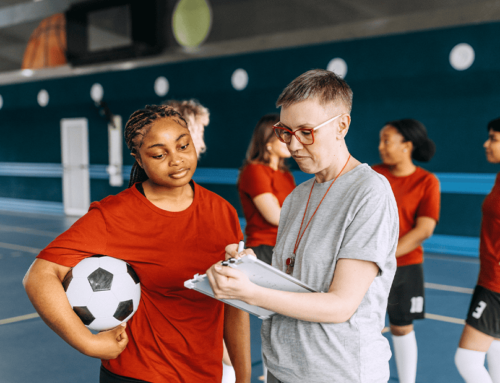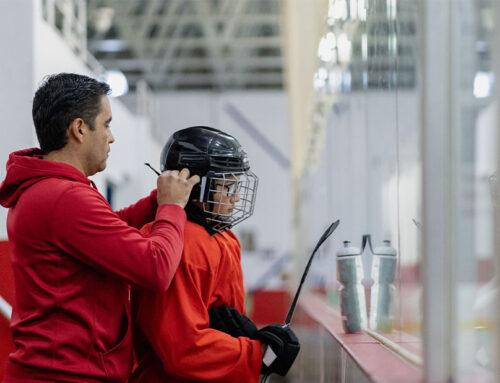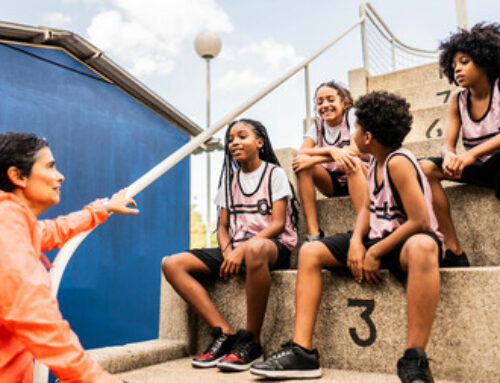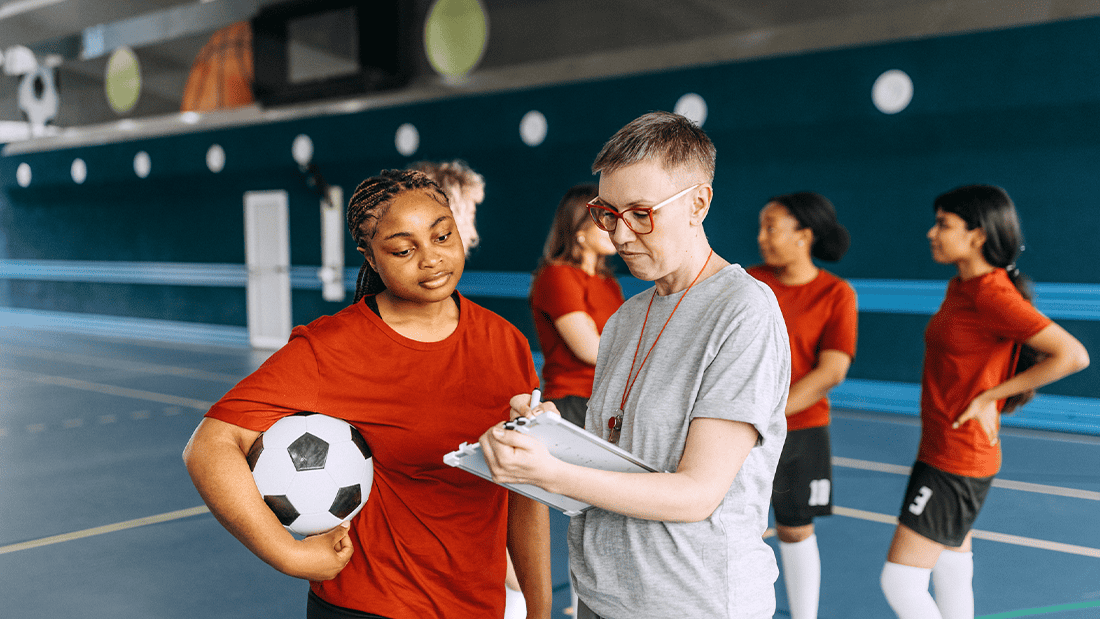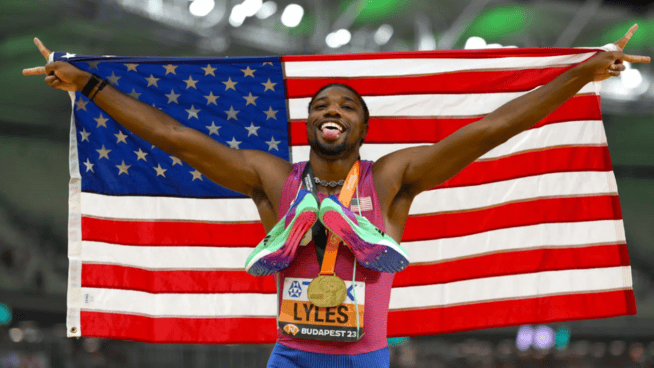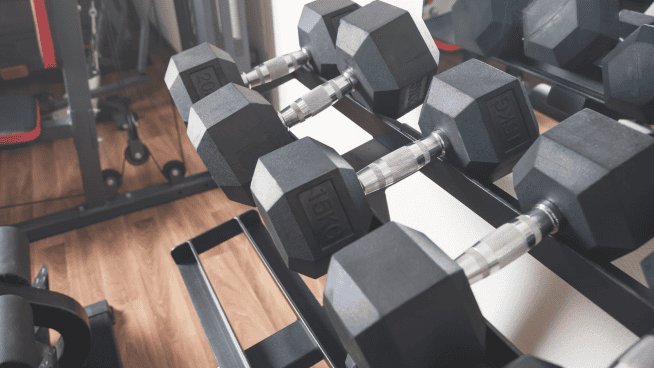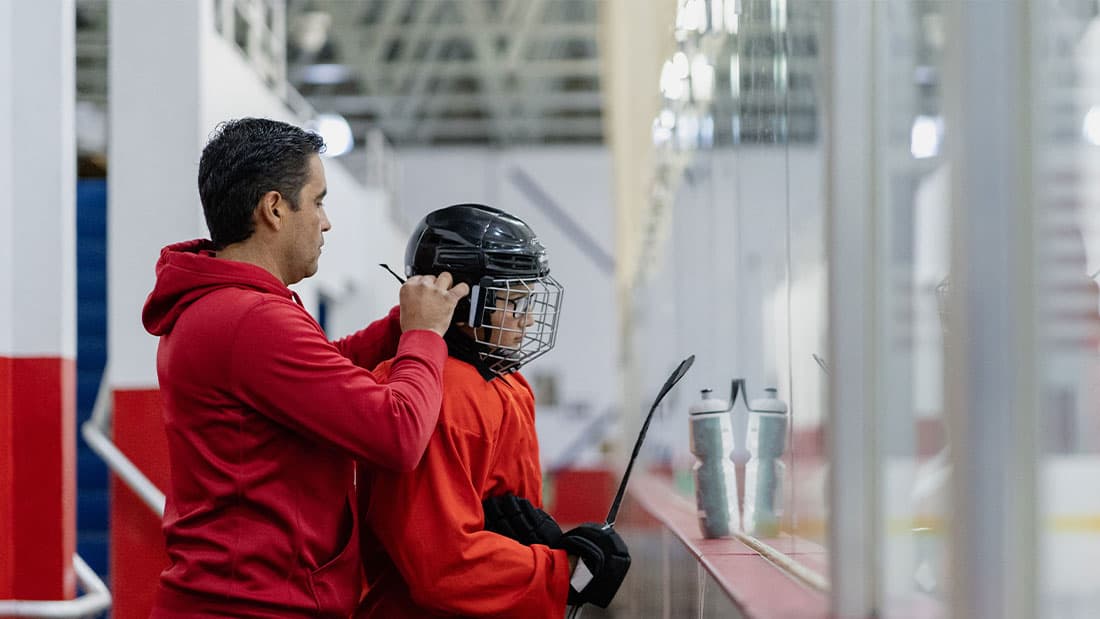What You Do Mentally at Halftime Will Boost Second Half Performance
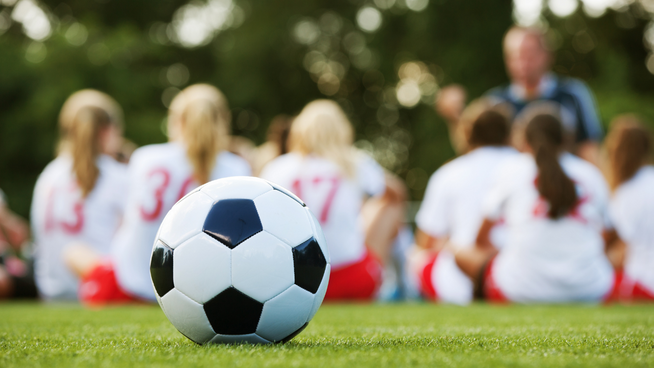
What you do at halftime makes a considerable difference in your second-half performance. Most times, players are just sitting around or doing light warmups, waiting for the game to restart. But what if there were some mental techniques that you could do to boost your performance in the second half?
Many professional and collegiate football teams practice mindfulness training, like the Seattle Seahawks and the University of Miami. Mindfulness and meditation have been found and used to optimize and maximize athletic performance.
Are mindfulness and meditation the key to athletic excellence? It looks like the answer is yes based on this mindfulness study.
Mindfulness Study
The researchers wanted to see how to improve the performance of competitive men’s soccer players at the start of the second half. They noticed that a player’s total distance and speed were diminished within the first 15 minutes of second-half play. Seventeen participants completed a mindfulness exercise after the first half. So instead of sitting around drinking water or stretching, they had the players listen to an audio clip about travel.
However, before the study, they took cognitive and memory tests, salivary cortisol, and blood lactate levels and evaluated mental fatigue. They were all measured before the game and at halftime to see how well and if the technique would work.
As a result, the mindfulness training enhanced the player’s performance in the first 15 minutes of the second half. It boosted mental acuity, reflexes, reaction time, and accuracy. They also experienced less fatigue. In addition, the researchers’ samples showed reduced cortisol levels.
Scientists conclude that athletes could maintain or even improve their performance by using mindful mental recovery strategies to reinvigorate their cognitive demands that help replenish physical strength.
Here are some ways to incorporate halftime mindfulness practices.
- Diaphragmatic Breathing Exercises
- Body Scanning
- Muscle Relaxation
- Sport-Specific Visualization Techniques
- Music
How Does It Work?
Anxiety, nervousness, and emotions interfere with physical performance. The more relaxed your mind is, the longer you can play and the more focused you will be. The mind definitely affects your physical potential.
In addition, meditation and mindfulness help you stay in the flow or zone state of mind. Also known as the theta brain. Theta brain activity is significantly increased during mindfulness and meditation. It is the state between being awake and asleep. The reason it is the way you get into your zone state of mind.
Mindfulness and meditation also improve the connection between all the pathways and networks in your brain.
Here Are a Few Mindfulness Routines
The mindful meditation routine you choose depends on your sport. For example, Focused Attention Meditation (FAM) requires the athlete to focus on a specific object. This type of training is great for golfers, archers, and gymnastics.
The other is Open Awareness Meditation (OAM). OAM instead requires players to concentrate and hone-in on everything that is happening around them. All their experiences need to be non-judgmental and relaxed. OAM is excellent for sports like soccer, volleyball, baseball, football, etc.
Here is a sample FAM training session.
And one for OAM Training.
There are many mindful meditation techniques you can do. FAM and OAM are just a few examples. Understand when you are in the “zone,” you will perform and play at your best and highest potential.
The relationship between mindfulness/meditation and performance is new and making significant strides that are positively working to boost an athlete’s performance. So far, researchers can confirm that mindfulness enhances self-confidence and the flow/zone state. Also, it reduces sports and personal anxieties.
RECOMMENDED FOR YOU
MOST POPULAR
What You Do Mentally at Halftime Will Boost Second Half Performance

What you do at halftime makes a considerable difference in your second-half performance. Most times, players are just sitting around or doing light warmups, waiting for the game to restart. But what if there were some mental techniques that you could do to boost your performance in the second half?
Many professional and collegiate football teams practice mindfulness training, like the Seattle Seahawks and the University of Miami. Mindfulness and meditation have been found and used to optimize and maximize athletic performance.
Are mindfulness and meditation the key to athletic excellence? It looks like the answer is yes based on this mindfulness study.
Mindfulness Study
The researchers wanted to see how to improve the performance of competitive men’s soccer players at the start of the second half. They noticed that a player’s total distance and speed were diminished within the first 15 minutes of second-half play. Seventeen participants completed a mindfulness exercise after the first half. So instead of sitting around drinking water or stretching, they had the players listen to an audio clip about travel.
However, before the study, they took cognitive and memory tests, salivary cortisol, and blood lactate levels and evaluated mental fatigue. They were all measured before the game and at halftime to see how well and if the technique would work.
As a result, the mindfulness training enhanced the player’s performance in the first 15 minutes of the second half. It boosted mental acuity, reflexes, reaction time, and accuracy. They also experienced less fatigue. In addition, the researchers’ samples showed reduced cortisol levels.
Scientists conclude that athletes could maintain or even improve their performance by using mindful mental recovery strategies to reinvigorate their cognitive demands that help replenish physical strength.
Here are some ways to incorporate halftime mindfulness practices.
- Diaphragmatic Breathing Exercises
- Body Scanning
- Muscle Relaxation
- Sport-Specific Visualization Techniques
- Music
How Does It Work?
Anxiety, nervousness, and emotions interfere with physical performance. The more relaxed your mind is, the longer you can play and the more focused you will be. The mind definitely affects your physical potential.
In addition, meditation and mindfulness help you stay in the flow or zone state of mind. Also known as the theta brain. Theta brain activity is significantly increased during mindfulness and meditation. It is the state between being awake and asleep. The reason it is the way you get into your zone state of mind.
Mindfulness and meditation also improve the connection between all the pathways and networks in your brain.
Here Are a Few Mindfulness Routines
The mindful meditation routine you choose depends on your sport. For example, Focused Attention Meditation (FAM) requires the athlete to focus on a specific object. This type of training is great for golfers, archers, and gymnastics.
The other is Open Awareness Meditation (OAM). OAM instead requires players to concentrate and hone-in on everything that is happening around them. All their experiences need to be non-judgmental and relaxed. OAM is excellent for sports like soccer, volleyball, baseball, football, etc.
Here is a sample FAM training session.
And one for OAM Training.
There are many mindful meditation techniques you can do. FAM and OAM are just a few examples. Understand when you are in the “zone,” you will perform and play at your best and highest potential.
The relationship between mindfulness/meditation and performance is new and making significant strides that are positively working to boost an athlete’s performance. So far, researchers can confirm that mindfulness enhances self-confidence and the flow/zone state. Also, it reduces sports and personal anxieties.

